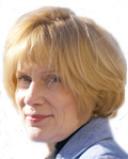Psychopharmacology
“Hero” Serial Killers
Some healthcare workers like the rush of “saving” patients they've endangered.
Posted June 26, 2016
During a trial in Germany last year for a male nurse-turned-serial-killer, he confessed to murdering many more patients than the two for which he was charged. “Niels H” had acquired a nickname, “Rescue Rambo,” because he seemed to always be on hand to reanimate patients in cardiac arrest.
These are two of the many red flags of a healthcare serial killer (HCSK). More are listed below.
Niels H had used a heart medication. He said he’d killed so many he’d lost count. Exhumations of 99 found one in three that showed traces of the medication, Gilurytmal. Police estimate that his victim count could be as high as 200.
Yet his employers had given him a solid recommendation when he went to another hospital.
Niels H. stated that he’d wanted to be a hero for bringing patients back from a heart attack. Apparently his numerous failures did not give him pause. He claimed he’d become addicted to the feeling that he was doing “something good.” Staff members became suspicious, but no one investigated. Finally, another nurse caught him.
Some predators become healthcare workers because they know they can find a steady supply of vulnerable people. Yet people with no such aspirations have transformed into killers on the job. Most say they are easing pain or showing mercy. Few have admitted to putting patients at risk so they can be heroes.
Operating at Good Samaritan Hospital on Long Island in New York was Richard Angelo. A former Eagle Scout and volunteer fireman, he, too, said that he’d risked patients in order to "save" them. He worked as an emergency medical technician and a charge nurse, so he had plenty of opportunities.
"I wanted to create a situation," he said in a taped confession, "where I would cause the patient to have some respiratory distress or some problem, and through my intervention or suggested intervention or whatever, come out looking like I knew what I was doing. I had no confidence in myself. I felt very inadequate."
It's estimated that in his desire to be important, Angelo murdered ten people. Gerolamo Kucich, a patient, caught him. Kucich saw a man put something into his IV, and he managed to reach for his call button before he succumbed. This action saved his life. He told some nurses about the incident and they linked his description to Angelo. Kucich's nurse had his urine analyzed. It tested positive for the paralyzing drugs, Pavulon and Anectine.
A search of Angelo's apartment turned up vials of both. He confessed that he'd killed patients. Ten bodies were exhumed and the drugs were found in their systems. News reports nicknamed Angelo Long Island's "Angel of Death."
Angelo said that he suffered from a mental disorder that precluded him from understanding the nature of his offenses. Two psychologists testified that he suffered from a dissociative identity disorder, so he had not recognized what he was doing during each incident. Because he’d felt inadequate, he’d sought to create situations in which he could feel powerful.
The jury convicted him.
Male nurses are disproportionately represented among caretakers who harm patients. While there are many more cases, quantitatively, of females who indulge, researcher Beatrice Yorker says that, between 1975 and 2005, male registered nurses represented 5-7% of all nurses yet were responsible for more than 1/3 of these incidents in the U.S.
The primary red flags for spotting male HCSKs, which I outlined in Inside the Minds of Healthcare Serial Killers, are listed below. No single trait or behavior is necessarily a concern, but a number of them associated with one person signals the need for attention and documentation.
This person:
* likes to “predict” when someone will die
* works shifts that show unusually high incidents of Code Blues or deaths
* has been seen inside a patient’s room shortly before that person’s health unexpectedly deteriorated
* likes to talk about death with colleagues or shows odd behaviors related to the death (excitement, undue curiosity)
* prefers shifts where fewer colleagues are around
* is given odd or macabre nicknames by other staff or by patients (like Rescue Rambo)
* is associated with several suspicious incidents at different institutions
* has the suspect substances at home or in a locker
* makes inconsistent statements when asked about the incidents
* has lied about something innocuous, for no apparent reason
* makes several colleagues anxious or suspicious
* seems to crave attention
* tries to prevent others from checking on patients
* hangs around during the immediate death investigation to listen to the details
Patients depend on hospitals to be vigilant for conditions that endanger them. HCSKs are rare, but just one can commit dozens of murders.




